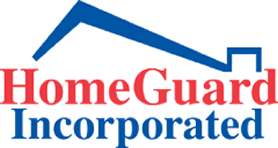More Revisions to PRDS Forms

by David Hamerslough
Last month’s article discussed revisions to some of the PRDS forms, including the REPC. This month’s article completes the discussion of recent revisions to the PRDS forms.
Supplemental Seller’s Checklist (“SSC”)
- Language has been added to the section entitled “Seller Caution” in the introduction to advise the seller to review the PRDS Seller Advisory Regarding Completing The TDS And Other Disclosure Documents prior to completing the SSC. Language has also been added advising the seller to “carefully review all of the definitions in Part 1 before answering the questions in Part 2.”
- The language in the box just below the general caution has been revised to eliminate any reference to any issue, condition, and/or problem having been “repaired.” The new language refers to efforts that have been made to “correct the Property.” Part of the rationale for this change was to move away from any language in the SSC that would imply or suggest that any issue, condition, and/or problem had been permanently addressed or resolved.
- The definition of the term “Documents” now has language added at the end that any such Document must be in the seller’s possession.
- The definition of the term “Work” has been revised so that it includes any Work involving not only a current issue, condition, and/or problem with the property but also a historical one. This was achieved by adding the words “or were” immediately prior to the words “any issues, conditions, and/or problems with the Property.”
- The reference to “Work finaled” in questions B and D of Part 3 has been revised. The word “Permit” has been substituted for the word “Work.” This was done to clarify that this question is asking whether the permits have been finaled, not whether the Work has been completed.
- Questions in ¶ E of Part 3 have been revised so that they are now consistent with other questions in the balance of the SSC.
- The term “hardscape” has been added to the list of property features in ¶¶ C and E of Part 5.
- Paragraph J of Part 5 relating to solar/photovoltaic and supplemental electrical systems has been revised. What is included in such a system has been expanded to keep pace with innovations to these types of systems. A question has been added for the seller to state the name of the company with whom any lease, lien, and/or power purchase agreement exists. Detailed questions regarding applicable fees and costs related to any such systems have also been added in ¶ J 2.
- Paragraph K 5 has been revised. The title is now “Home Automation And Security.” Once again, this paragraph has been updated to take into account new devices and developments with respect to these types of systems. There is an expanded list of such systems that can now be checked if they are part of the property. A question has been added to determine if there is any additional equipment required to operate any of the listed systems or devices. New questions have been added about whether there are home automation service providers, whether alternative service providers have been investigated, and whether any of the systems are monitored offsite by a company. If the answer is in the affirmative, then further details should be provided, and any related documents should be attached.
- Paragraph K 6 has been expanded. The title is now “Issues, Conditions, Problems, And/Or Limitations” and is now consistent with the issues raised in the questions within this subsection. In addition, the scope of the questions now highlight that they apply to any issues, conditions, and/or problems with the “use, capacity, or service of any of the devices or systems” set forth in ¶¶ K 1 through K 5. Similarly, question B now requests information regarding, among others, any limitations or restrictions applicable to the “capacity” of any of the devices or systems. These changes were prompted by claims regarding these issues.
- The list of animals in Paragraph T has been revised to include toads and salamanders and snails/slugs. Once again, these changes have been made due to claims and issues raised by purchasers of property.
- Paragraph X has some new questions. There is a catch-all question (#11) asking the seller to state whether there are “any leased or liened devices, systems, or equipment not already disclosed above.” If the answer is in the affirmative, the seller needs to identify the leased or liened items and the company or companies that are involved with those items. This catch-all questions was added to make sure that the seller has provided a complete list of any such leased or liened items in hopes that any issues associated therewith will be addressed prior to the close of escrow.
Seller Advisory Regarding Completing The Real Estate Transfer Disclosure Statement And Other Seller Disclosure Forms (“SARC”)
- The following changes have been made to highlight that the seller should provide all existing documents in their possession, whether current or historical, to a buyer.
- The documents identified in the second bullet point under the section “Preparing To Complete Your Disclosure Obligations” have now been defined as “your existing documents.” A third bullet point has been added to this section: “Use your existing documents to refresh your memory of past and current issues, conditions, and /or problems and provide a copy of your existing documents with your fully completed Disclosure Forms.”
- On page 3, at the conclusion of the section entitled “Supplements To The TDS,” a clause has been added at the end of the last sentence in the second paragraph advising the seller to “attach a copy of all of your existing documents as specified in both forms.”
- Under the section “Final Suggestions,” also on page 3, bullet point 5 has been modified to recommend that the seller contact a qualified California real estate attorney for advice not only on what information to disclose but also what “documents” to disclose.
Exempt Seller Disclosure (“ESD”)
Two changes have been made to this form:
- A “Seller Caution” has been added at the top of the form. This caution advises the seller to carefully review the SARC prior to completing the ESD. Adding this seller caution is consistent with the caution provided on other disclosure forms.
- Question 3 has been revised to provide an option for the seller to check a box and provide an attachment in response to this question. This gives a seller more space than the three lines in the form itself.
Intent To Exchange Addendum (“IEA”)
- A definition has been provided in ¶ 1 to identify whether the seller or the buyer is going to be the “exchanging party.” There is no need for there to be two separate exchange forms as required by C.A.R. unless both buyer and seller want to do an exchange.
- A new paragraph has been added to ¶ 2 of the IEA, specifying what damages a seller is entitled to if they are the exchanging party and the buyer defaults. Under the current IEA and the current C.A.R. BXA, if the seller is the exchanging party and the buyer defaults, sellers’ damages have been limited in the event that the parties have initialed the liquidated damages provision in the purchase contract and otherwise met the requirements for that provision to apply. There have been a number of instances where the damages that a seller would suffer as a result of such a default far exceed the deposit(s) actually paid.
Paragraph 2 now provides that the seller’s damages are not limited to the liquidated damages provision, and that provision shall not apply even if it has been initialed by the parties. The upshot is that there will be no limitation on the amount of damages that the seller may legally seek to recover that relate to or arise from the buyer’s default. This new language creates parity between the parties because it now balances the potential impact if a buyer defaults. This new language now treats both parties equally if there is a default.
New Construction Purchase Contract (“NCPC”)
PRDS has created a new construction purchase contract. A note at the top of the NCPC states that this contract is only to be used with completely new single-family construction. It is not intended for use with subdivisions subject to review and approval by the Department of Real Estate and also is not intended to be used with existing structures that are being or have been remodeled or renovated and/or where a portion of a prior structure is being used as part of a new structure. The rationale for the foregoing is that the Committee believed that this form is appropriate for the type of new construction that is prevalent in this geographic area.
About David Hamerslough
In his 35 years of practice, Dave Hamerslough has litigated and arbitrated residential and commercial real estate disputes on behalf of brokers and agents, buyers and sellers, and landlords and tenants. Dave also acts as a mediator and arbitrator of real estate disputes. He also teaches courses and writes articles on these subjects to brokers, agents, attorneys, and consumers.
HomeGuard serves most of Northern California from San Jose to Livermore, Oakland to Walnut Creek, up to Sacramento and down to Modesto.
HomeGuard is equipped to deliver superior home inspection services. Our Home Inspectors are carefully selected for certification based on technical skills and professionalism. We can set up a Home or Roof Inspection at the same time you call to make an appointment for your Termite Inspection, Pool/Spa Inspection, or Sewer Lateral Inspection, another timely and cost-effective way of meeting your needs.




